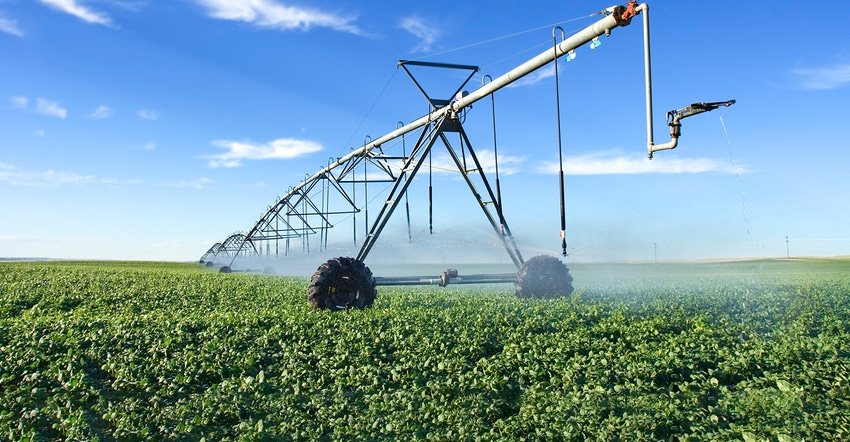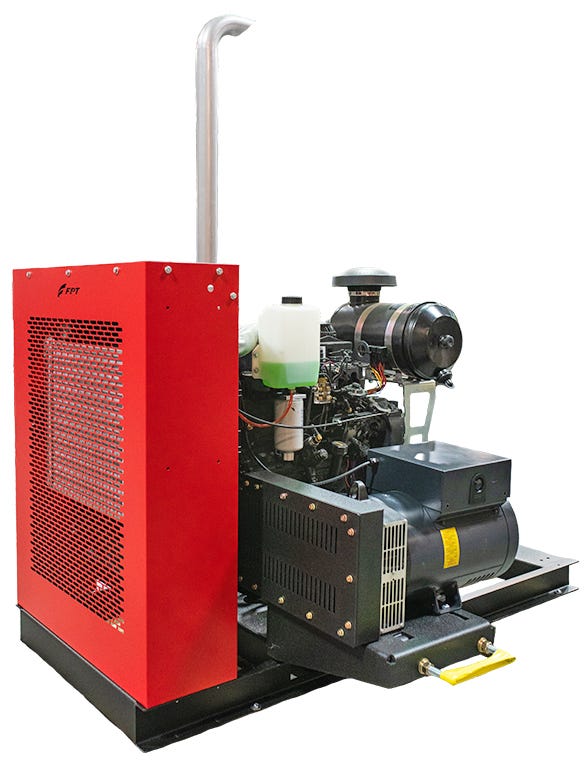October 1, 2018

The changing nature of emission laws for diesel engines for the past few years is creating some confusion in the country. Yet there’s also an opportunity that engine manufacturers see. The confusion comes as the EPA’s seven-year Transition Program for Equipment Manufacturers, commonly called the “flex program,” comes to an end.
Under the flex program, if a buyer was going to put in a new engine installation, it was possible to avoid moving to final Tier 4 and install a lower-tier engine. That’s because the flex period allowed companies with “emission credits” to use those credits to put lower-tier engines into the market. Not everyone was aware of the original equipment manufacturers’ constraints of the flex engine credit system, says Braden Cammauf, who heads up the North American market for FPT Engines with CNH Industrial. “Customers are calling to order Tier 3 engines, not realizing that they might have used all of their flex engine credits, or that these engines have to be installed in an [Irrigation Power Unit] before Dec. 31, so unfortunately I can’t fill those orders under EPA guidelines,” he says. “What I realized after these calls is that we can sell these engines for replacement in existing IPUs if we develop a strategy and business case to service this market.”
The end of the flex engine program in 2018 doesn’t mean farmers are stuck at replacement time. But it does mean new installs will require a Tier 4 final engine. Yet FPT Industrial sees an opportunity under EPA guidelines for a large Tier 3 replacement engine market. “We’ve had interest from customers and distributors with large populations of lower-tier irrigation systems in their market looking for a path forward” Cammauf says. “Our diesel replacement program provides a solution forward that’s both cost-effective and simple for the end user.

STEPPING BACK: FPT Industrial is working with engine distributors to provide a factory-direct solution for Tier 3 engine replacements in 2019. This allows farmers to replace an engine without the need to install added tech, like a diesel exhaust fluid system. (Photo courtesy of FTP)

The reason is that under EPA guidelines, if you’re replacing an engine and you follow specific steps, you can install an engine from a previous tier that doesn’t require aftertreatment or diesel exhaust fluid (DEF) to run. The rules specify that the replacement must be the same or better than the engine being swapped out. That’s a concern for farmers with installed irrigation power units that need to replace an engine. The good news is that after the flex program expires at the end of 2018, you can still install a Tier 3 engine as a replacement in an existing system, provided you follow some simple rules.
“From fan to flywheel, you can replace the engine in an existing installation,” says Zach Turner, president, Anderson Industrial Engines Company Inc., a regional distributor, based in Omaha, Neb. “You need to use the existing frame, and as much of the other associated equipment on site [as possible].” EPA has outlined key rules regarding replacement engines, and essentially you have to leave enough of the original installation behind so it’s clear this isn’t a new install.
The old engine cannot be put back into service. The block must be destroyed so that the old engine cannot be placed back into service, Turner says. Follow those rules and an existing power unit can retain a lower-tier setup and avoid some of the strictures of moving to a final Tier 4 engine.
Turner added that old engines that have been removed can still have spare parts removed for later use, including heads, turbochargers and fuel pumps.
Market potential
Cammauf, who notes he was getting great interest in Tier 3 engines for replacements in the irrigation market, explains that there’s little information about the potential for a replacement market using lower-tier engines. “It’s information we’re working to put together,” he says.
In Nebraska, Turner estimates there are more than 100,000 pump stations, offering significant replacement potential. Cammauf is working to better understand the potential in other states, too.
And that’s where Cammauf says FPT has decided to step up. “We’re offering factory-direct engines to distributors for the market,” he says. “We’re not classing them as service parts, or directing them to be remanufactured.”
A remanufactured engine is also allowed under the EPA rules, and is a viable option for some. However, Turner points out a reman engine doesn’t come with the same warranty as a new FPT engine — which is two years or 2,000 hours. “A reman engine might have a 60- to 90-day warranty, but an irrigation engine can sit idle for three or four months, so the warranty could expire before you put it into service,” he adds.
There are company-sponsored reman programs from manufacturers that offer different warranties. There’s also time involved. If you pull an engine for remanufacturing, you know it’ll be out of service for a few weeks. “We will have new engines in stock in our warehouse in Omaha,” Turner says. “I can deliver those in a day for our region.”
Service or repair parts designation for an engine puts it through a different distribution channel that, Cammauf notes, can also boost the cost for farmers. By going factory-direct, he claims it reduces costs.
Cammauf is new to his role heading up FPT Engines for the NAFTA region, and he’s looking for solid market opportunities. The irrigation replacement engine market offers what he sees as a quick way to boost market penetration for the brand. He’ll work with distributors and through dealers including Case IH and New Holland dealers that may have supplied engines in the past for irrigation use.
A changing global market
Engine makers, driven by European and U.S. emission standards, are moving production to meet those lower emission rules. Cammauf’s push to provide new Tier 3 replacement engines would impact the move by the manufacturing side of the business to convert to higher-tier designs.
“I worked with our plants,” he says. “We’re a global engine manufacturer, and there are parts of the world where Tier 3 engines are still used. We’re still making those engines for other markets; I’m working to have those available to North American users as part of this program.”
FPT isn’t the only engine manufacturer offering direct replacement with lower-tier engines. Farmers should connect with their local engine supplier to learn what options are available.
In a replacement situation, a farmer doesn’t need to tack on the added challenge of aftertreatment systems for an existing power unit.
Going new? The challenges of Tier 4 final
Farmers who need to install a new irrigation pumping system have some options, including diesel, propane and natural gas. The diesel engine you need for a new install today may offer some sticker shock at buying time, with a price as much as 50% higher than a similar-sized, lower-tier engine. And these new engines bring along some added considerations.
“Sizing the system is different with Tier 4 final,” said Turner. “You have to size the DEF tank to match the diesel tank.”
The days of installing a 5,000-gallon diesel tank to serve an irrigation power unit may be over. Turner explained that you have to size the DEF tank as a direct proportion to the size of your fuel tank. A 5,000-gallon fuel tank could need a 500-gallon DEF tank.
The challenge is that DEF needs some special handling. “This is going to be something we have to manage on new installs,” Turner says.
DEF freezes and doesn’t hold condition if not handled carefully. It’s one of the reasons many irrigators are seeking power alternatives when it comes to new installations.
Turner is confident, however, that with the engine choices available, farmers will find the right solution when installing new power options.
About the Author(s)
You May Also Like






